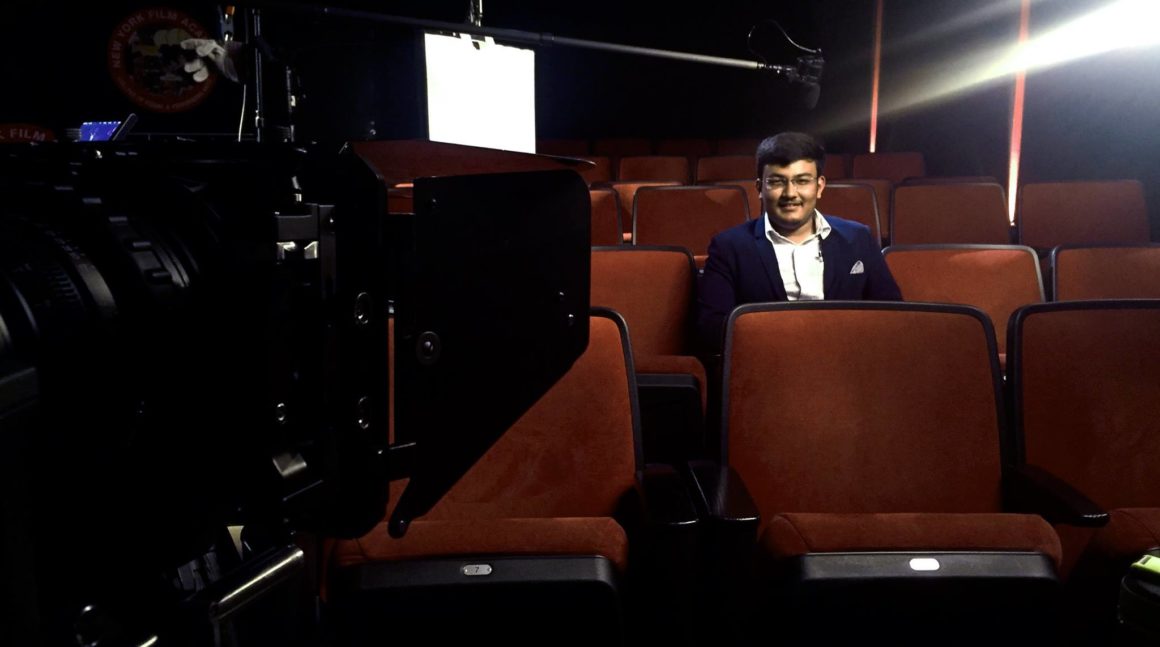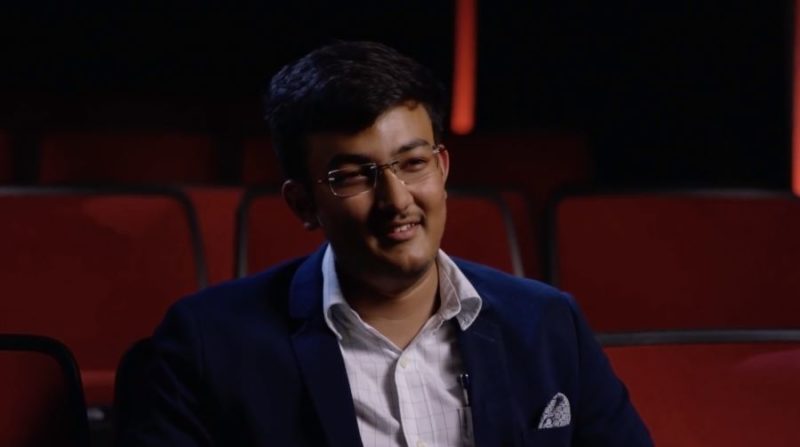Ever since he was a child, Kartikye Gupta was fascinated by cinema and how technology was used as a tool to tell stories in this medium. While his love for films led him towards becoming an extraordinary filmmaker, his passion for technology made him come up with innovative techniques and methods to enhance the process of filmmaking. Being the son of a television producer and the grandson of a film producer, Kartikye got drawn to the world of cinema at a very young age. He started making films at the age of 10 and a couple of years later, received a talent grant from the prestigious New York Film Academy to get a better command over the craft of filmmaking.
Since his debut film Dr. Elevator, which was acclaimed by Oscar-winning actress Viola Davis and screened at more than 50 film festivals, has used editing to bring attention to many relevant themes and new modes of thinking about editing. His next film, released the following year, was titled Please Don’t Call the Cops and premiered at the biggest South Asian Film Festival (SAIFF) – where it was nominated for the editor’s first HBO award. Gupta has not only excelled in the fiction arena, but also in documentaries and commercial filmmaking working with brands like Nike, Reebok and Facebook.
In this interview, the young filmmaker talks about his journey as a filmmaker, fascination with technology, love for storytelling, the urge to tell South Asian stories, the cinematic appeal that India offers and more.
People often speak about how cinema is an art form but its technological aspects are not discussed extensively. You are somebody who likes to experiment with technology all the time.
Technology keeps evolving and that’s the most exciting part of it. The volume of films being made now is much higher than the number of films being made in the ‘80s or the ‘90s. Technology has made it possible to tell stories in a much more convenient manner. Equipment is easily available and it is much cheaper than what it used to be. Today, a lot of individuals are shooting short films using their smartphones. Even feature films have been shot on iPhone. Back in the day, filmmakers were dependent on reels and other things that were very expensive.
Technology has not just offered resources, it has paved the way for new mediums to make films on. 50 years back, you could only screen your films in theaters. There was no television or computer then. Now, so many people consume content exclusively on their phones. Two years back, an Oscar winning producer launched an OTT platform that was designed for an audience that wanted to watch films only on their phones. Now, brands make ads for Instagram and other social platforms. Virtual reality is getting a lot of attention and it will definitely change the way we consume content in the near future.
So, the need of the hour is to strike a balance between storytelling and technology?
I guess both these things go hand in hand. A lot of films today are tech-heavy. People are using hi-tech cameras and trackers. Most of the films, including comedies or dramas, are visually-heavy. For a great story to become a film, it has to be visually appealing. It has to have a cinematic appeal. However, a great story can also work without great VFX. The classics which were made before did not have any VFX. That being said, technology does help the medium and contribute towards enhancing the story.
You have studied filmmaking at the American Film Institute. How important, do you think, is formal training for a filmmaker?
My father runs colleges and is from an educational background. He would always tell me that whatever you pursue, you must educate yourself first. What a film school does is it helps you to fail. A film school is a great place to learn about different aspects of filmmaking and make mistakes. It gives you a chance to fail multiple times and grow during the process. Once you are out of film school, you are on your own. The industry expects you to be best at the work you do. You cannot afford to make mistakes afterwards.

It’s been just a couple of years since you started your professional career as a filmmaker. In a very short span of time, you have worked on many interesting projects including the Facebook Metaverse film.
I was fortunate enough to get exposed to virtual reality a little early in life. I distinctly remember seeing a very basic VR film back in 2018, and thinking that this is one technology that would change the entertainment landscape forever. Since I had spent a lot of time with my technology, I could take up professional projects that involved the use of virtual reality.
A big commercial agency hired me to edit visual effects for the first Metaverse commercial Facebook was putting out. They needed to be futuristic but relatable at the same time. That video did two important things. It introduced the users to Meta, the new name of the company and also familiarized them with a new technology.
You have a documentary series lined up for release. Tell us something about them.
This year, three films which I was a part of are being premiered at the Oscar qualifying Tribeca Film Festival. Tribeca showcases some of the finest creations from around the globe in the heart of New York City and makes it available to the audience in the most convenient way. One of the series, Supreme Team, produced by Showtime, takes an in-depth look at the notorious Queens, New York gang, and tells the real story from the mouths of its two leaders and family members, Kenneth “Supreme” McGriff and Gerald “Prince” Miller. Nowadays, graphics and animation are revolutionizing documentaries to tell stories in an innovative way. One of the main characters is currently in federal prison, so there was no video interview available, the team was stuck on how to visually make it appealing without having access to visuals for the interview. This is when I led the team on creating strong graphical language to clarify complex information and convey a tone which informs, dramatizes and leaves an impact. The animation not only helped in storytelling, but also gave a high production value to the product here.
Where do you see yourself in the next five years?
It is a question I revisit once every six months. Most of the films that I write and direct are about the South Asian community in America. With every new story to be told, there arises a new way of telling it. Today, most South Asian families have a few members or relatives living abroad. I spent the first fifteen years of my life in Bhopal. Then, I came to Los Angeles. I have a keen interest in telling South Asian stories. It is the second-largest growing ethnicity in the United States after the Chinese. India is one of the most cinematic countries in the world. The diversity of the country makes it truly special. Whenever I travel back to Bhopal, I see stories everywhere. People in India are very caring and thoughtful. That’s the reason so many great stories come from there.

